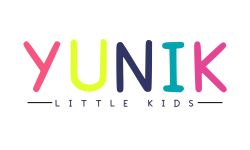Introducing Solid Food to Babies – When & How?

Is your mommy mind occupied with all the concerns about your baby’s health and nutrition? If the most common question that pops up for you is ‘How do I introduce solid foods to my baby?’ Or ‘When to start solid foods?’, then simply read on. We got all the answers for you.
Starting Solids for Baby
When coming to what foods to give baby and when to start, everyone around us seem to have some opinion about it.
But, you know what, starting solids is no rocket science. Get to know about the recommendations and act based on your instincts and your baby’s cues.
After all, mommy knows what’s best for the baby, isn’t it?
When to start solid foods for baby?
The answer is quite simple – when your baby is ready!
Yes, it is recommended to start solid foods for your baby when your baby shows these readiness signs.
- Should be able to sit upright – with or without support.
- Tongue thrust should be gone. Tongue thrust is a natural reflex in infants to prevent anything entering their mouth by pushing it with tongue and avoid choking. This goes by around 5 to 6 months.
- Seems to show interest in other’s food plate.
- Completed 180 days – It is highly recommended to exclusively breastfeed or formula feed for the first 6 months.
Remember, since your baby gets enough nutrition from the breastmilk, you don’t need to rush this milestone of introducing solids before your baby is ready.
Also, make sure to NEVER start giving solid foods before 4 months, because their digestive system will still be in a developing stage.
Read: Recommendations by The American Academy of Pediatrics
Breastfeed as long as possible
It is recommended to
- Breastfeed or formula feed exclusively for the first 6 months
- Complement it with solid foods during 6 to 12 months
- Continue complementary breastfeeding for at least 24 months as long as you wish.
You know, there are moms who breastfeed their kids for even more than 5 years. So trust your instincts and decide which is best for you and your baby.
Also, remember if you are not able to breastfeed for some reason, you still are the best mom for your kid. And you shouldn’t have to feel guilty about it.
How to introduce solids to babies?
Woah! That may be pretty much a simple question to ask. But the answer could be vast.
Ask a child nutrition expert or a lactation consultant, she will tell you why!
Well, I am neither an expert nor a professional though. But, just a fellow mom sharing what I learned and explored in this journey of motherhood.
So, here is what I got to say about this.
Let them explore
Confusing? But, that’s the most important thing you should remember while starting solids.
The first few months of introducing solids are just for them to explore food and develop habits of grasping foods and eating.
So, there is IDEALLY nothing to stress about this phase – well, practically, we do stress out a lot about this!
Decide the approach
And here comes my favorite part – which approach to follow for giving solid food?
There are technically two ways you can decide to feed the baby –
- The Baby-Led way – Self-fed by the baby
- The Traditional way – Spoon fed by others
The difference is basically in the texture and method you feed.
Baby-Led Weaning – The term weaning may be misleading in some way but it is actually to mean baby-led feeding.
In this way, the baby is allowed to explore and have the food by herself. So, the food will be usually offered as finger foods. Best suitable for families who eat together.
Traditional Feeding – The traditional method of feeding the baby with pureed or mashed foods.
Get the timing right
Ever wondered why sometimes your baby becomes too fussy to eat? The reason may be because they are too hungry or sleepy and they really need breast milk or formula milk to soothe them.
That is why, it is generally advised to give solids to the baby at least 30 minutes after breastfeeding (45 minutes to 1 hour in case of formula feeding) and when they are not so sleepy.
It may be difficult at the start to get the timings right, but eventually, you will get the hang of it by the baby’s cues.
Also, remember to give new foods only in the mornings, so as to be safe in case they get allergic to the food.
Know the difference between Gagging & Choking
The one thing that is a nightmare for any parent about giving solid foods to the child is gagging and choking.
But, knowing better about these words can give you peace of mind instead of fearing it.
Gagging is a natural reflex of the human body to push out anything trying to enter the windpipe to prevent choking. So, there is nothing to be anxious about the gagging reflex.
Choking, on the other hand, is the actual threat that happens when the baby’s windpipe is blocked by something making it difficult for them to breathe.
But, the fact is that the chances of choking are extremely low if some precautions are followed – foods are offered in the right sizes and the baby is seated in an upright position.
Foods to avoid while starting solids
Here are few foods that are advised to be avoided for kids in early days for starting solid foods due to some side effects it causes.
- Honey – has risks of infant botulism for kids below 1 year.
- Raw uncooked pulses, eggs, meat
- Hard foods with choking hazards – raw pieces of apple, carrot, nuts, cookies
- Animal milk – should be offered only after 1 year
Wrapping it up…
Evidently, this is my first post on this blog – Yunik Little Kids. It was fun sharing about Introducing Solids with you as I somehow re-lived my days of starting solid foods to my little girl.
Hope this helped you with some of your doubts on starting solids to your baby. If you have any doubts or feedback, it would be generous of you to drop a message.
Watch out this space for more. Because I have a whole lot of posts planned out for you on feeding tips and kid-friendly recipes.





[…] Not sure when and how to start introducing solids? Check out this post for all the details. […]